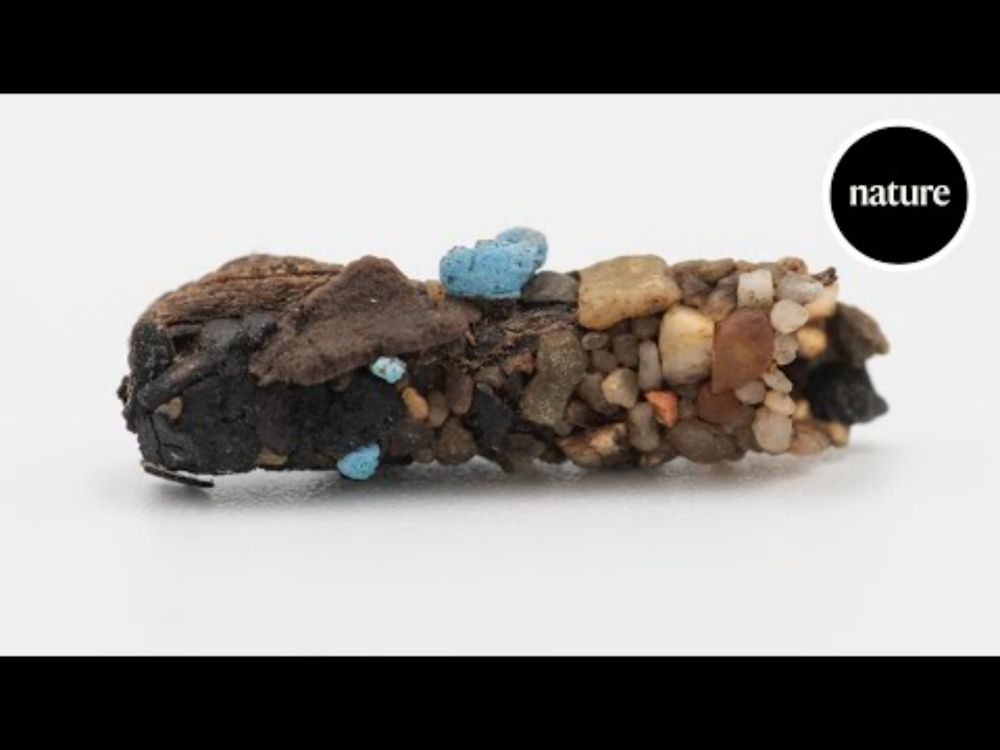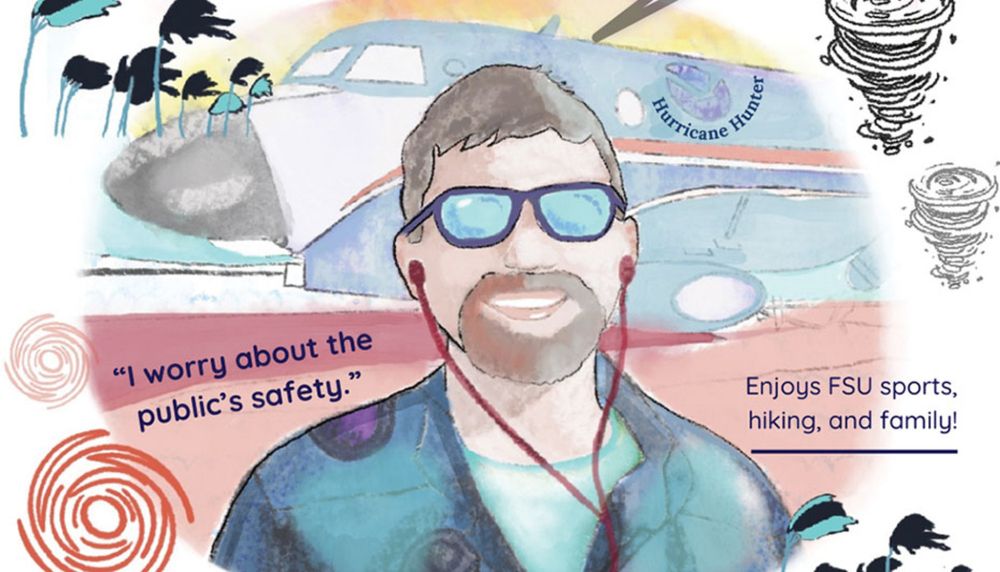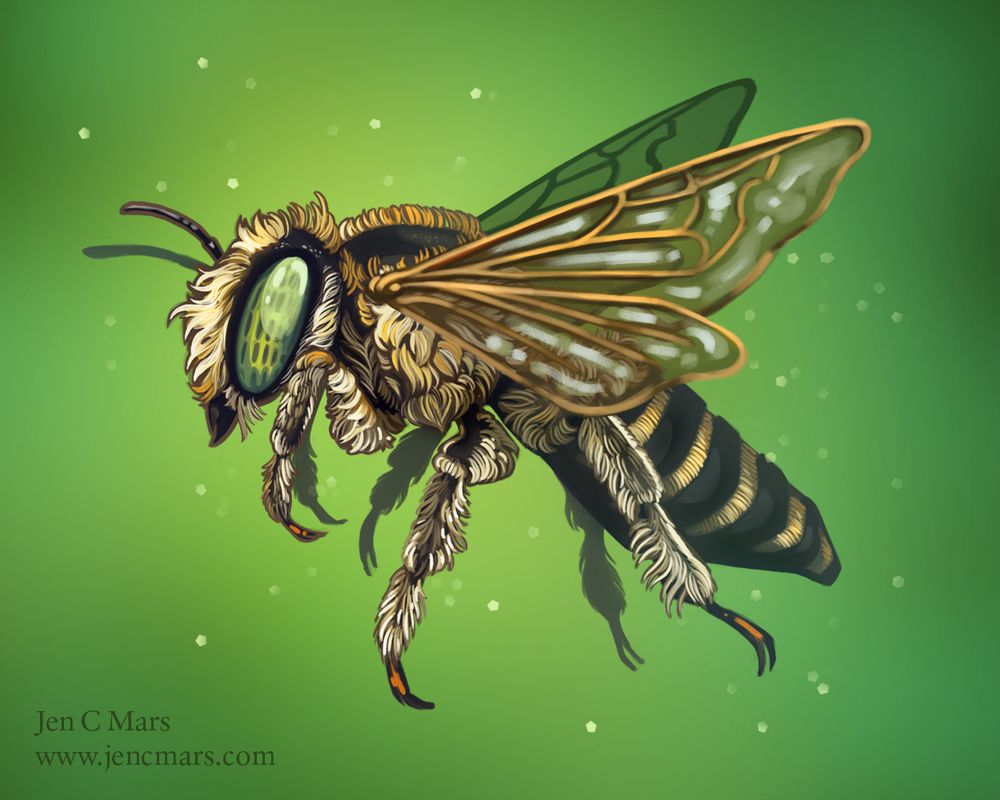
Digital illustration of an extremely fluffy pale colored bee with huge green compound eyes and a yellow and black striped abdomen against a bright green background
It's #WorldBeeDay and I love bees! This is a silvery leaf bee from last Invertober. Most of our beautiful (and helpful!) bees are solitary bees like this one.
20.05.2025 13:20 — 👍 152 🔁 45 💬 3 📌 0
YouTube video by Kat Mowle
"Awww, you guys made me ink!"
We had a very impressive view of a reef squid inking right in front of the camera this morning on @coralcitycamera.bsky.social
@sarahmackattack.bsky.social
www.youtube.com/watch?v=VAno...
20.05.2025 14:13 — 👍 71 🔁 13 💬 2 📌 0
73% of mothers with kids under 18 are in the workforce. More than flowers or brunch, working moms need:
-Paid family leave
-Equal pay
-Universal childcare
(But get your mom flowers, too)
11.05.2025 14:20 — 👍 17430 🔁 4095 💬 254 📌 114
YouTube video by Smithsonian's National Museum of Natural History
Mother's Day: Kids Explain What Their Moms at the Natural History Museum Do for Work
SO CUTE. Listen as kids explain what their scientist moms do at the Smithsonian Natural History Museum 💚
#MothersDay
10.05.2025 19:31 — 👍 287 🔁 89 💬 10 📌 11
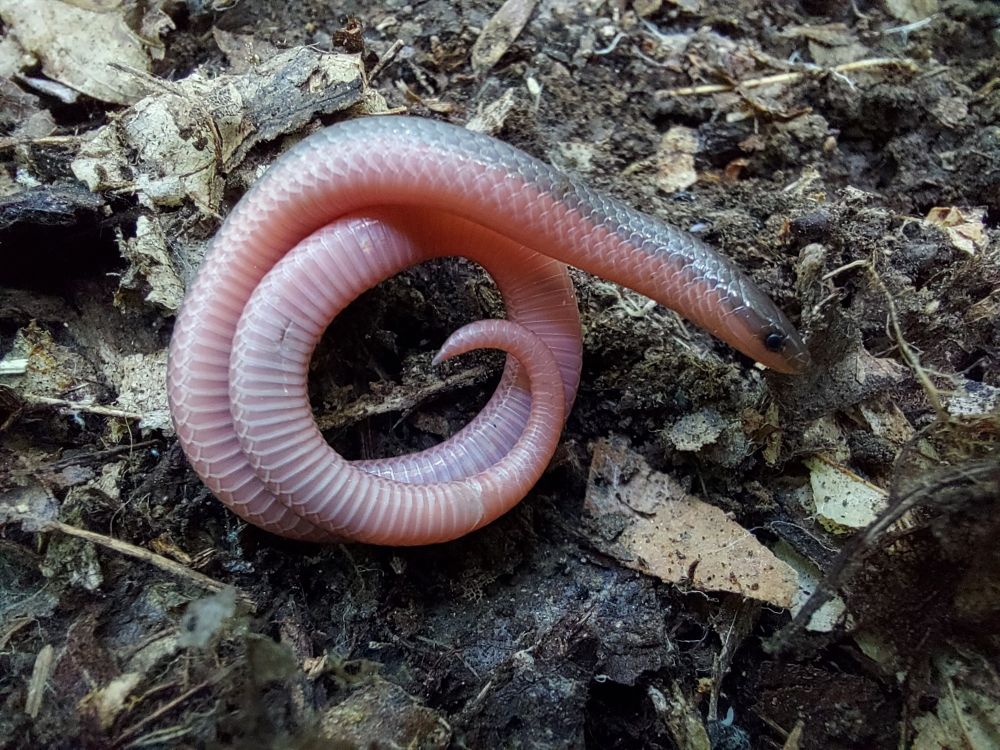
A thin curled up snake on top of leaf litter. It is brown dorsally and pink below, with a pointed tail and black eyes.
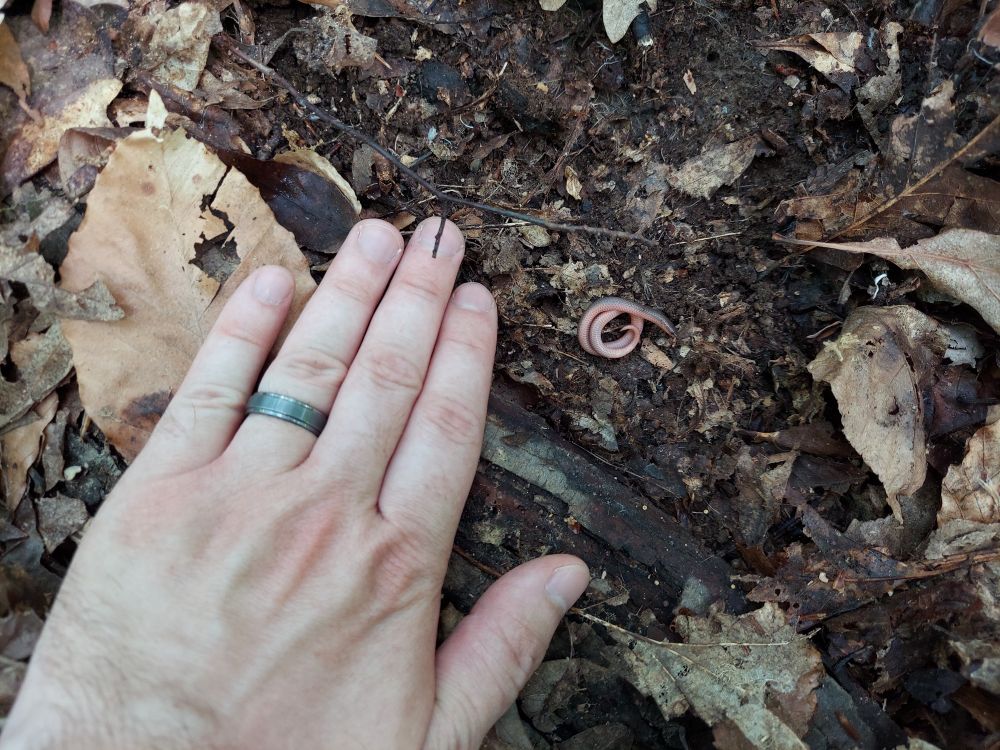
Hand next to the snake giving a sense of scale; the snake is quite small and thin compared to my hand.
The worm snake, one of those leaf litter finds that's startling before you say "oh okay" and get back to looking for centipedes. Northern Virginia.
10.05.2025 18:30 — 👍 269 🔁 34 💬 10 📌 4
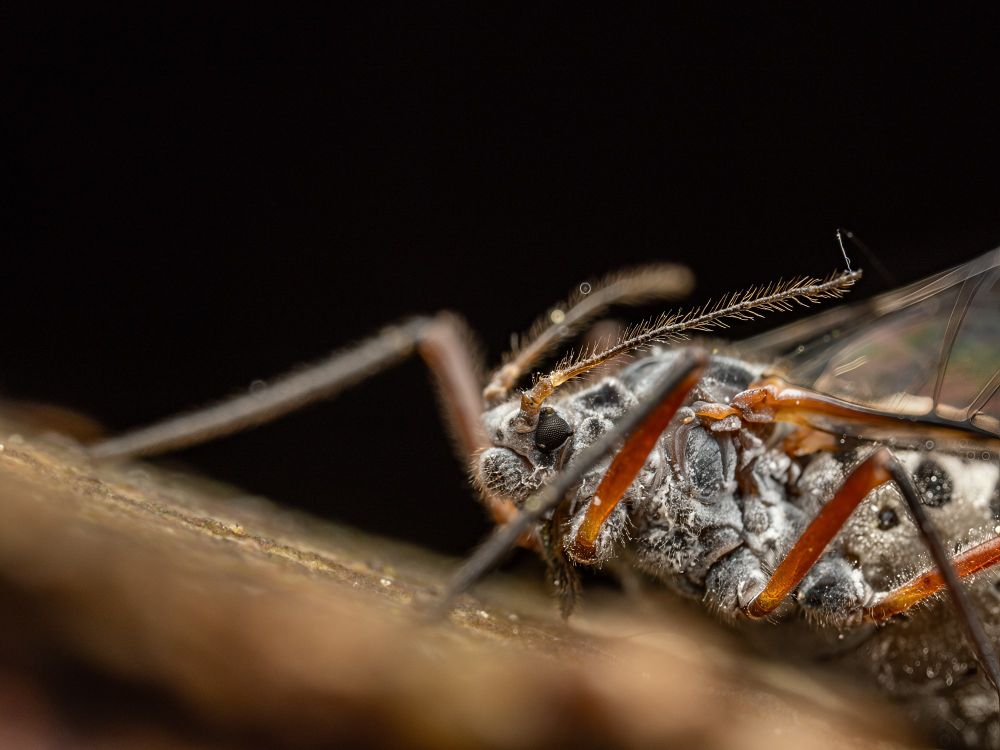
An extreme close-up macrophotograph of a giant bark aphid, likely Longistigma caryae, positioned on tree bark. The insect's head and thorax are in sharp detail. Its compound black eyes, segmented antennae with fine bristles, and mouthparts are visible as it feeds. The body is covered in a fine, powdery substance, and its legs are reddish-brown, thin, and jointed, anchored against the rough bark surface. One of the aphid’s transparent wings can be seen folded back, reflecting subtle iridescent colors. The background is black, isolating the aphid in focus.
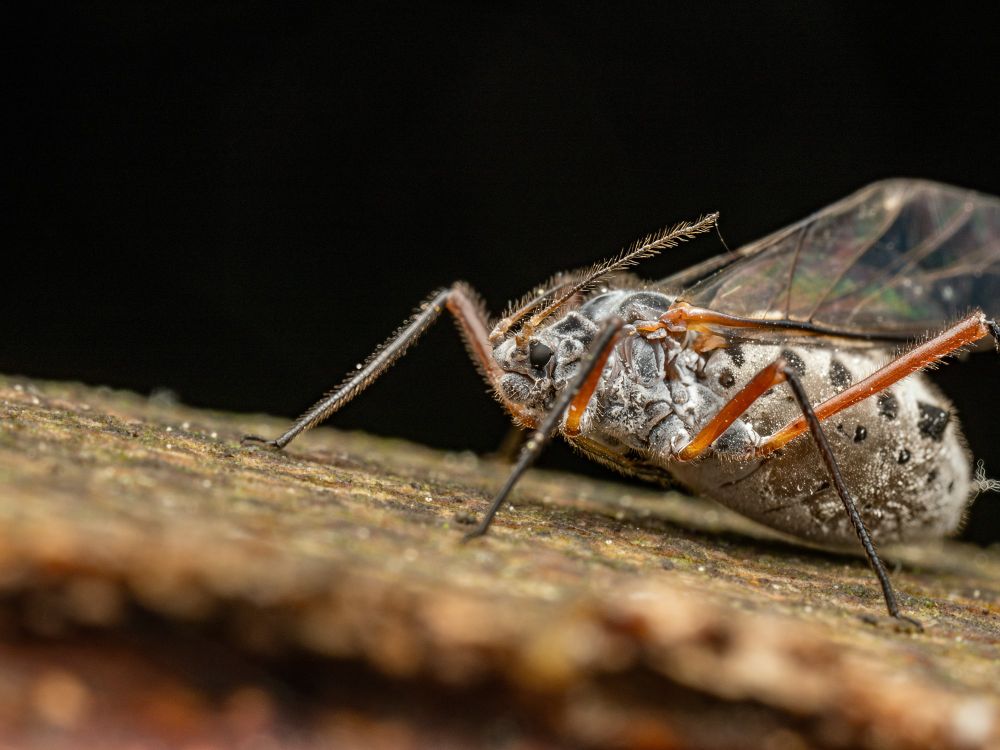
A macro image showing a fuller side profile of the same giant bark aphid, likely Longistigma caryae, on tree bark. The aphid’s light grey body is large and somewhat bulbous, with a speckling of black spots. Its reddish legs are arched slightly as it remains stationary. The wing is translucent with visible veining and reflects rainbow-like hues in the lighting. The insect’s antennae extend forward and show fine setae. The tree bark beneath has a textured surface, with green and brown hues. The black background creates a dramatic contrast that highlights the insect’s features.
It’s been a long time since I’ve seen a giant bark aphid (probably Longistigma caryae) feeding out in the open like this. They pierce right through bark into the phloem with an almost unsettling ease. Absolutely amazing creature.
#Aphididae #hemiptera #Invert #macrophotography 🪲🪳🌿
06.05.2025 00:26 — 👍 37 🔁 7 💬 1 📌 1
In which I feel joy for the bird, followed by immediate sadness for the bug. A rollercoaster of emotions.
06.05.2025 01:00 — 👍 350 🔁 30 💬 14 📌 5

A quartet of scarlet elf cup peep out from between fallen branches and logs on the forest floor. All photos by me
Here are some nice mushrooms
25.04.2025 12:57 — 👍 7001 🔁 320 💬 225 📌 29
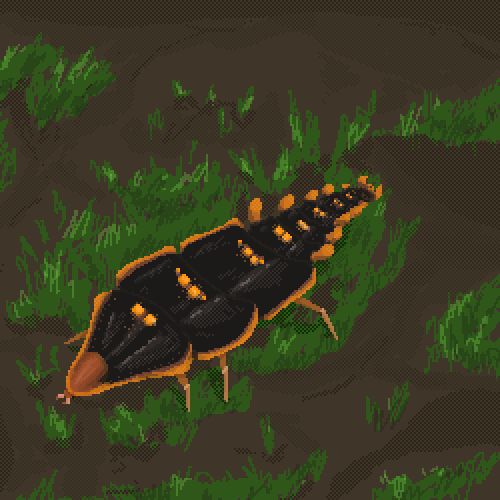
high angle view pixel art of a trilobite beetle - it resembles a trilobite, with black plates going from larger at the anterior to smaller at the posterior, with orange edges and orange spots at the back of each plate, with a pair of legs from the first three segments. It's on mossy ground.
A Trilobite Beetle (Platerodrilus svetae) from Northern Borneo!
They are part of the genus Platerodrilus and the females retain their larval form as adults (larviform females).
#Invertefest #trilobitebeetle #insects #pixelart
24.04.2025 17:41 — 👍 79 🔁 19 💬 3 📌 0
YouTube video by nature video
Microplastic pollution found in insect casing from 1971
So very hyped that @nature.com made a video about our study on microplastic in caddisfly casings! 😱🎥
Watch it preferably next to a creek... some of them might want to tune in too. 🍿🐛
11.04.2025 18:29 — 👍 193 🔁 55 💬 3 📌 6

Happy Earth Day, friends.
Our homeworld, seen by the crew of Apollo 8 in 1968.
22.04.2025 16:20 — 👍 4456 🔁 582 💬 83 📌 28
Earth is so pretty.
22.04.2025 22:20 — 👍 5830 🔁 716 💬 154 📌 59
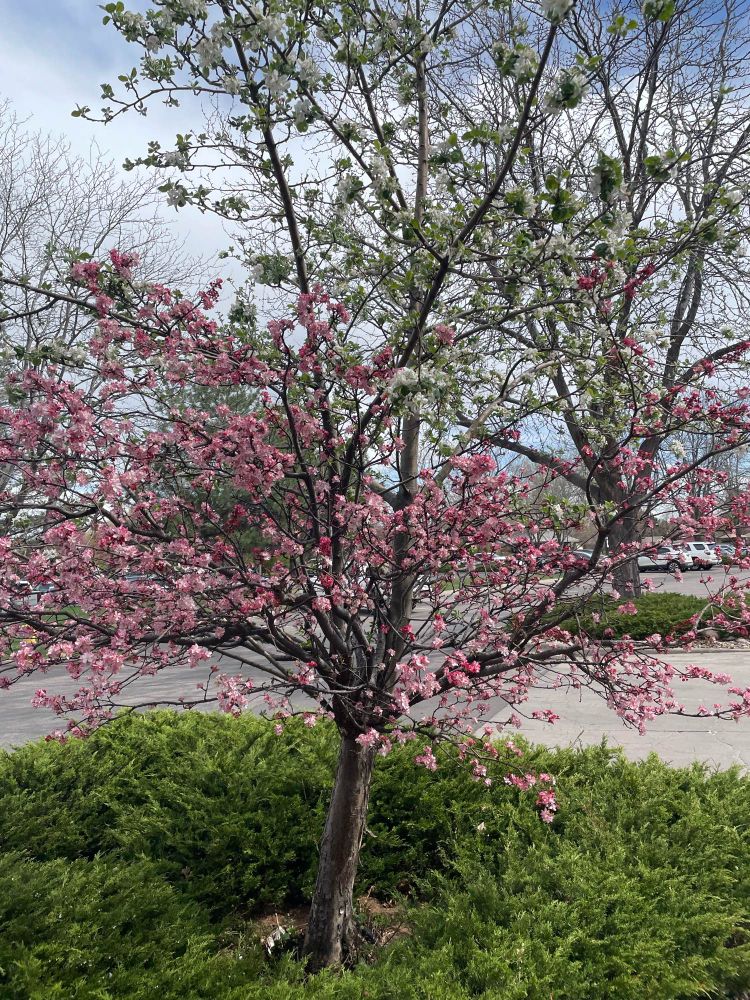
A tree with half pink and half white blossoms
I passed this apple tree on my walk today. Two different colors of blossoms! Plant grafting, the fact you can just take two different plants and grow them on the same plant, is amazing!
23.04.2025 04:07 — 👍 3 🔁 0 💬 0 📌 0

shop flyer including images of the 4 cute vinyl stickers available
SHOP IS NOW OPEN! these 4 vinyl stickers are currently up for grabs!!
🐛🐌🐟👟
ill be including little traditional doodles with my orders!! hope you enjoy!!
#smallbusiness #art #stickers
21.04.2025 18:29 — 👍 200 🔁 40 💬 2 📌 0
My quote of the day
Faith and science can be united in charity if science is put at the service of the men and women of our time, and not distorted to their detriment or even destruction.
Pope Francis, June 2024
21.04.2025 10:04 — 👍 500 🔁 102 💬 8 📌 2
Guy 1: these flies taste funny
Guy 2: how do they taste
Guy 1: they taste with their feet
Guy 2: wow l learned something
21.04.2025 12:38 — 👍 1013 🔁 55 💬 12 📌 4
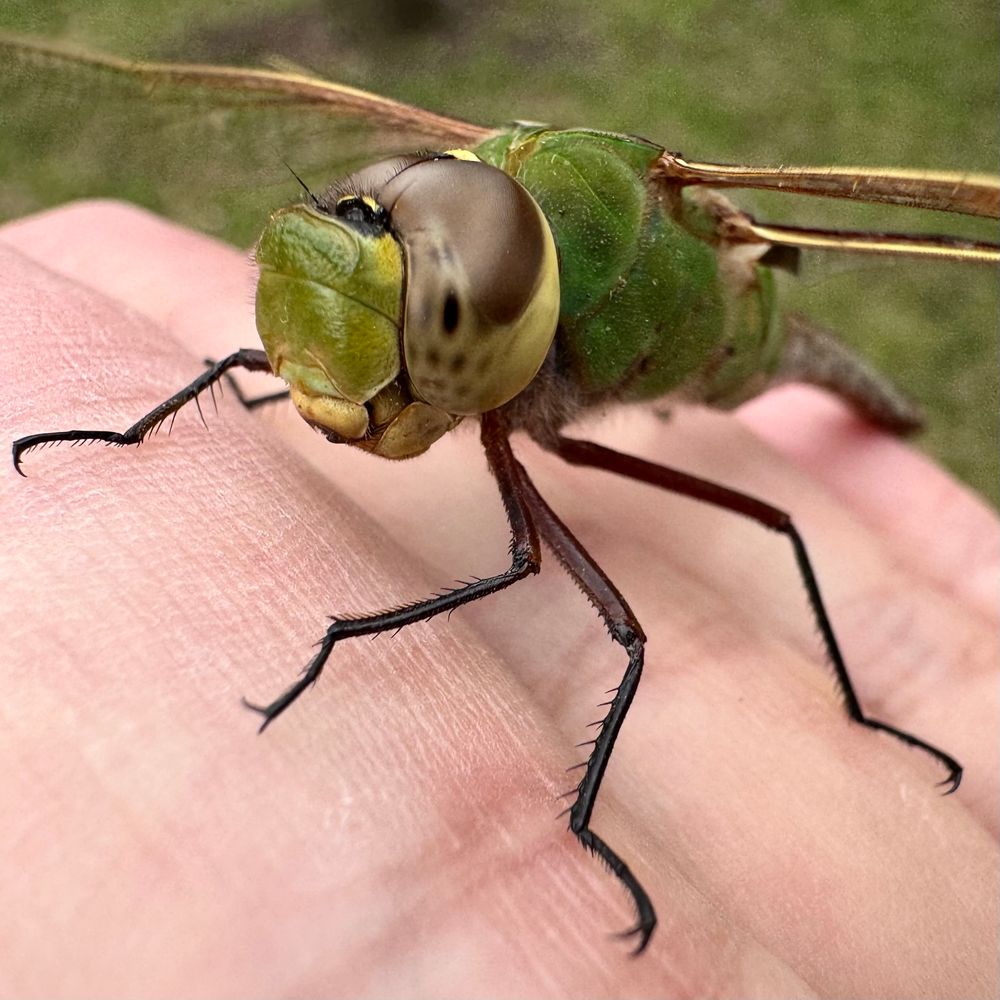
Female green darner dragonfly (Anax junius) close up on my hand
What a beast 💚 #invertebrate
21.04.2025 16:10 — 👍 158 🔁 17 💬 1 📌 0
My NSF postdoctoral fellowship was one of the grants terminated yesterday. Devastating is an understatement. Thankful for a supportive admin with a plan to support me for now.
19.04.2025 15:11 — 👍 156 🔁 26 💬 13 📌 0

From left to right are Shannon W. Lucid, Margaret Rhea Seddon, Kathryn D. Sullivan, Judith A. Resnik, Anna L. Fisher, and Sally K. Ride. NASA selected all six women as their first female astronaut candidates in January 1978.
Maybe we should honor the women who were real astronauts.
From left to right are Shannon W. Lucid, Margaret Rhea Seddon, Kathryn D. Sullivan, Judith A. Resnik, Anna L. Fisher, and Sally K. Ride. NASA selected all six women as their first female astronaut candidates in January 1978.
19.04.2025 03:54 — 👍 27910 🔁 6831 💬 526 📌 293
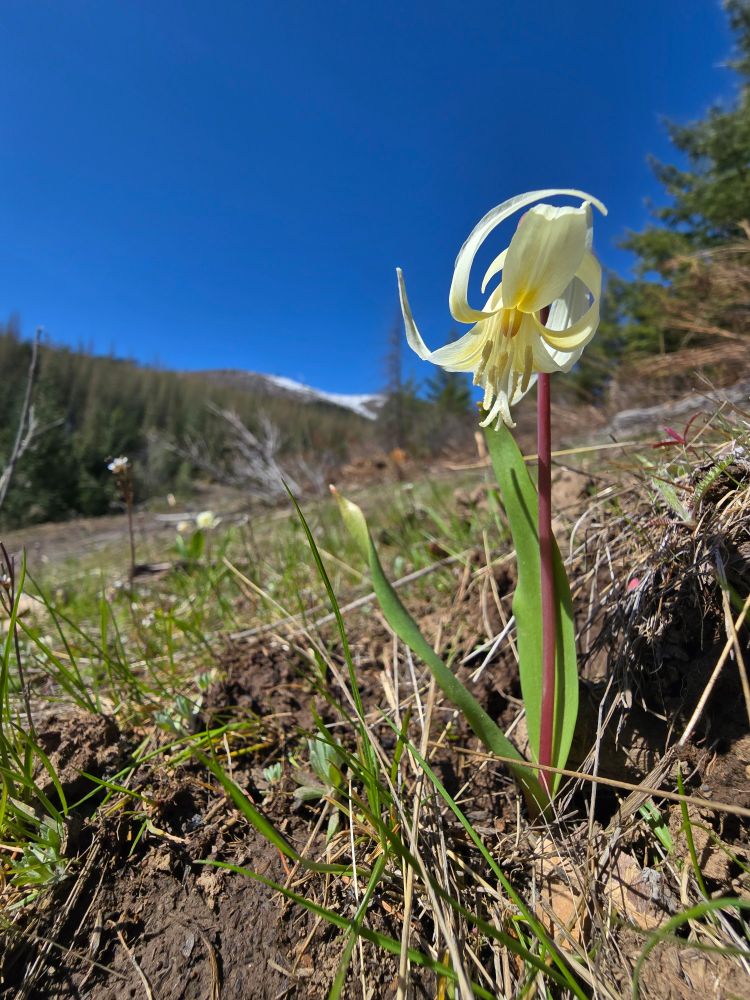
A creamy white glacier lily flower with skinny, tulip-like foliage rises from a sunny slope, with distant forested and snowy mountains out of focus in the background.
You're probably tired of glacier lilies but I love them and you chose to follow me so...check out this ethereal white one! I love running across weirdo individuals and populations that don't match the classic phenotypes. #nativeplants #bloomscrolling 🌿🌱
17.04.2025 15:43 — 👍 105 🔁 8 💬 5 📌 0
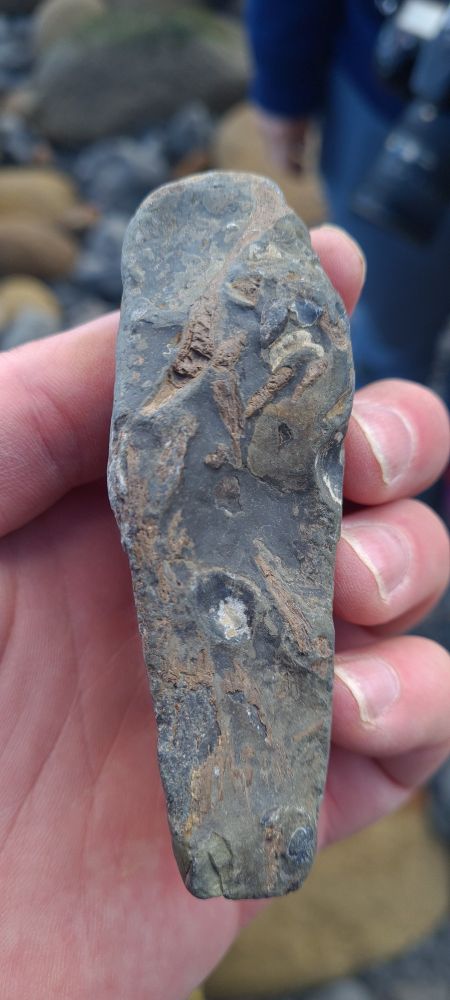
Photo of grey rock with long thing chocolate coloured fish bones. And a normal human hand.
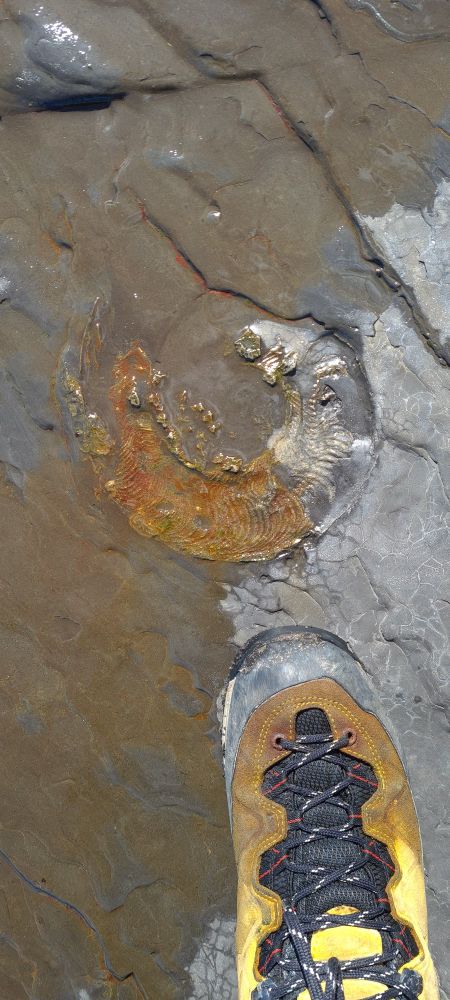
Photo of a human foot (normal) in a yellow walking boot. Next to a large yellow and red ammonite.
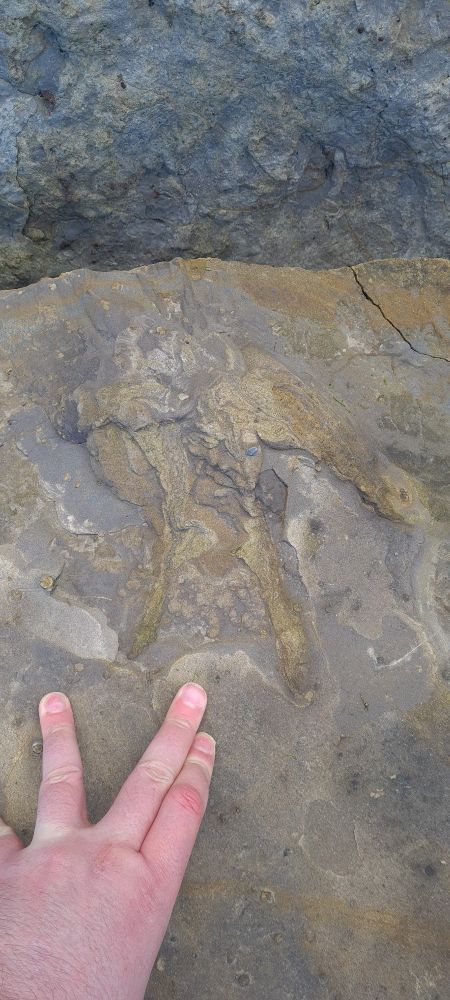
Photo of a grey rock surface with a normal human hand next to a three toed reptile print made of yellow green sandstone

Photo of a grey rock surface with a human hand (normal) coveted in thin branching red brown fossil burrows.
Another successful trip. Found lots of fossils including some fish bones and possible pterodactyl prints. #whitby #geology #paleontology
17.04.2025 14:33 — 👍 24 🔁 4 💬 0 📌 0

Six trapezoids.
1. Quick—which of these shapes is different from the others?
16.04.2025 18:58 — 👍 431 🔁 126 💬 59 📌 24
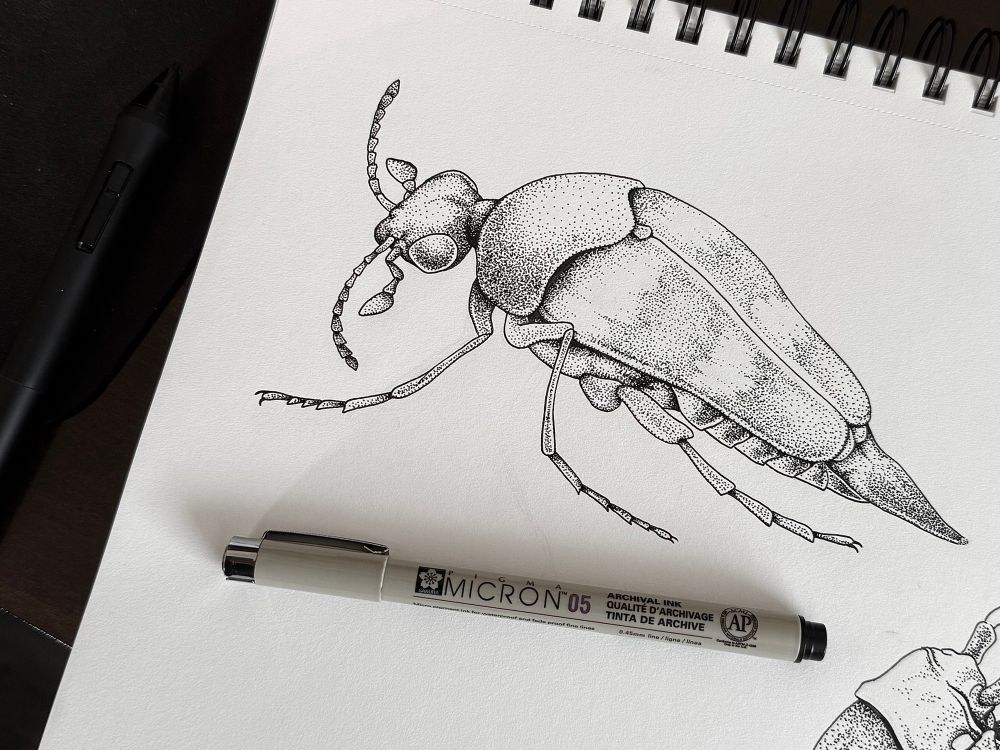
Pen and ink illustration of a tumbling flower beetle, Variimorda villosa. Art by Domenic Pennetta.
My last #ink drawing did so well I had to post another one! Here’s a tumbling flower #beetle 🪲 they’re named after the crazy movements they make to avoid predation—first they jump, then they spin as they fall down!
#sciart #scientificillustration #wildlifeart #inkart #nature #invert #insect #bugsky
15.04.2025 14:28 — 👍 89 🔁 6 💬 3 📌 0

YEEEEAAAAHHHHH
13.04.2025 21:45 — 👍 146 🔁 39 💬 10 📌 1
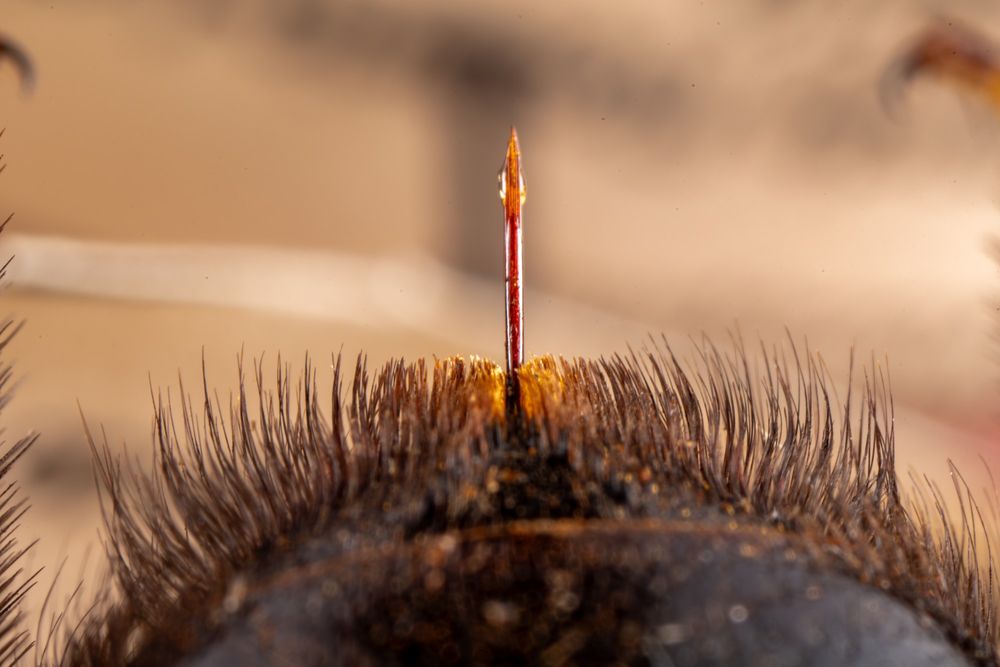
Extreme macro image of a carpenter bee's stinger, a smooth, needle-like structure emerging from a patch of reddish-brown hairs on the abdomen. The stinger is part of a modified ovipositor, used defensively to deliver venom. Unlike honeybees, carpenter bee stingers are unbarbed, allowing multiple stings. A clear droplet of venom glistens at the red-tinted tip, poised for use. This reproductive-origin organ is only found in females, as males lack both ovipositor and stinger.
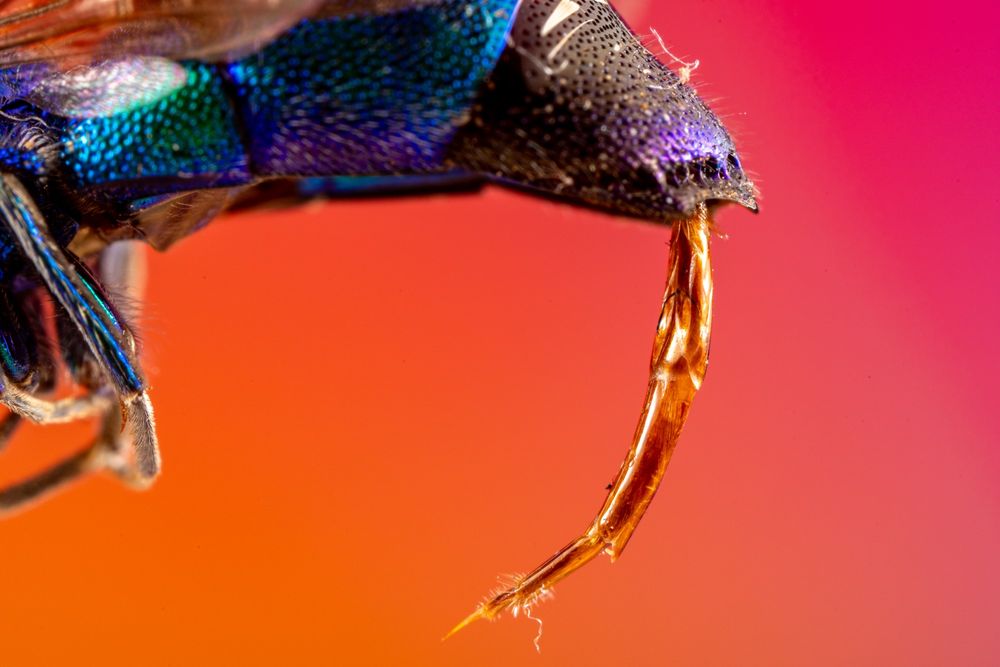
Close-up of a cuckoo wasp’s ovipositor, a delicate, golden-brown structure arching downward from a brilliantly metallic blue-green abdomen. This ovipositor is used not for stinging but for laying eggs inside the nests of other insects, a parasitic behavior. The wasp locates a host nest, then uses this tool to deposit eggs, which hatch and consume the host’s larvae or stored provisions. The colorful background accentuates the iridescent textures of this kleptoparasitic wasp.
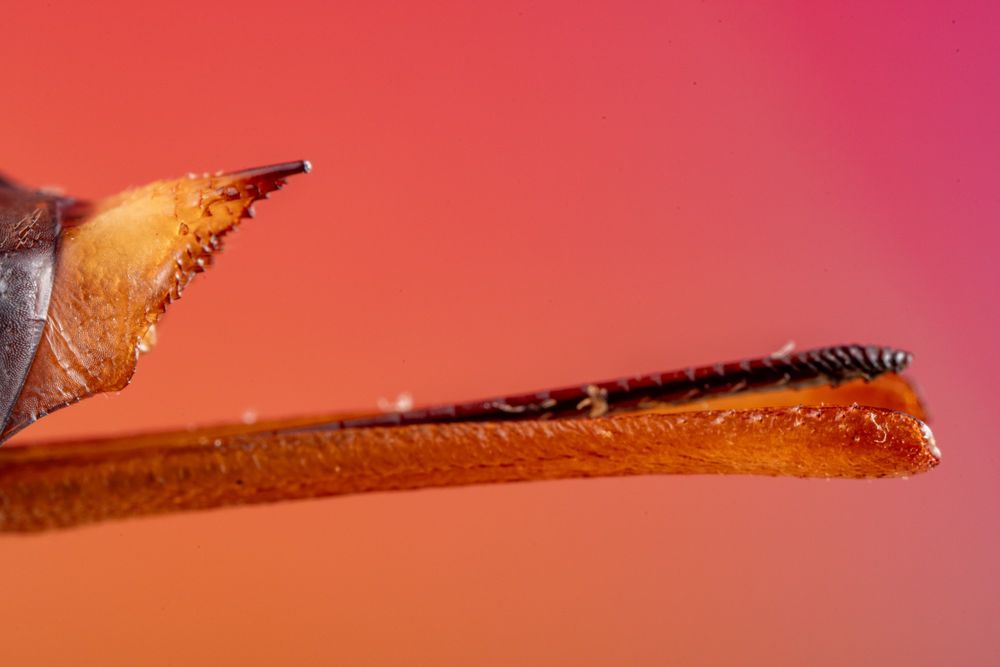
Macro image of a wood wasp’s ovipositor, a robust, drill-like structure designed to bore into wood. The image shows the cutting part near the tip, equipped with serrations for sawing through bark and into tree trunks. This female lays eggs inside the wood, often accompanied by a symbiotic fungus that helps digest the plant tissue for developing larvae. The image highlights both the ovipositor’s evolutionary specialization for wood-boring reproduction.
Today we’re talking about one of evolution’s strangest tools: the ovipositor. Hymenoptera probably began as plant-feeders in the Permian. Parasitoidism evolved once in the Late Triassic. By ~142 Ma, some ovipositors became venomous stingers.
🧪🌿 #Invertebrate #bugsky #Hymenoptera #macrophotography
12.04.2025 21:52 — 👍 73 🔁 16 💬 3 📌 2
Paranthrene simulans, (Grote, 1881), a Batesian mimicry MASTER!
#educational #science #entomology #bugs #moth #wasp #insects #lepidoptera #batesianmimicry #nature
12.04.2025 17:14 — 👍 96 🔁 20 💬 7 📌 2
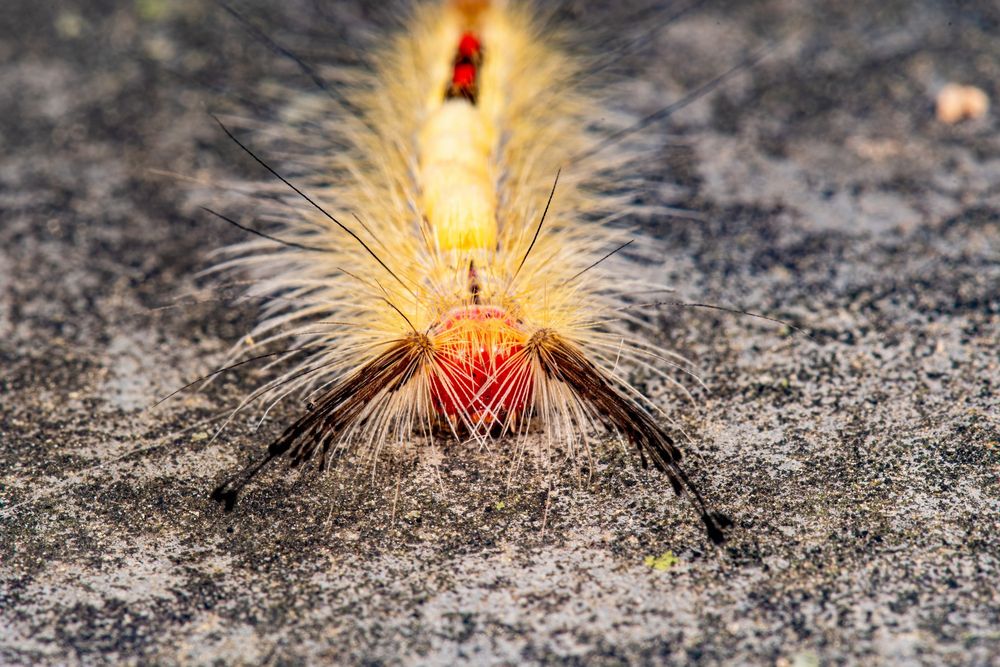
The White-marked Tussock Moth (Orgyia leucostigma) caterpillar is hard to miss—those bright red glands and bushy tufts are a warning. This species uses urticating hairs for defense, which can irritate human skin. A striking example of Lepidoptera strategy.
One of those moths that screams don’t touch me absolutely stunning in an alien critter kind of way. The caterpillar of Orgyia leucostigma flaunts bold colors and urticating hairs as a warning. Nature’s way of saying “look, but no touch”
#Erebidae #macrophotography #entomology #insects #lepidoptera🌿
01.04.2025 22:05 — 👍 24 🔁 4 💬 1 📌 0
@entsocamerica.bsky.social is offering membership fee waivers for those affected by recent firings across the United States. They are also running a donation fund to help cover these fees. If you want to support your fellow #entomology community, donate! If you need help with a fee waiver, apply! 🧪🌿
27.03.2025 00:34 — 👍 33 🔁 18 💬 0 📌 1
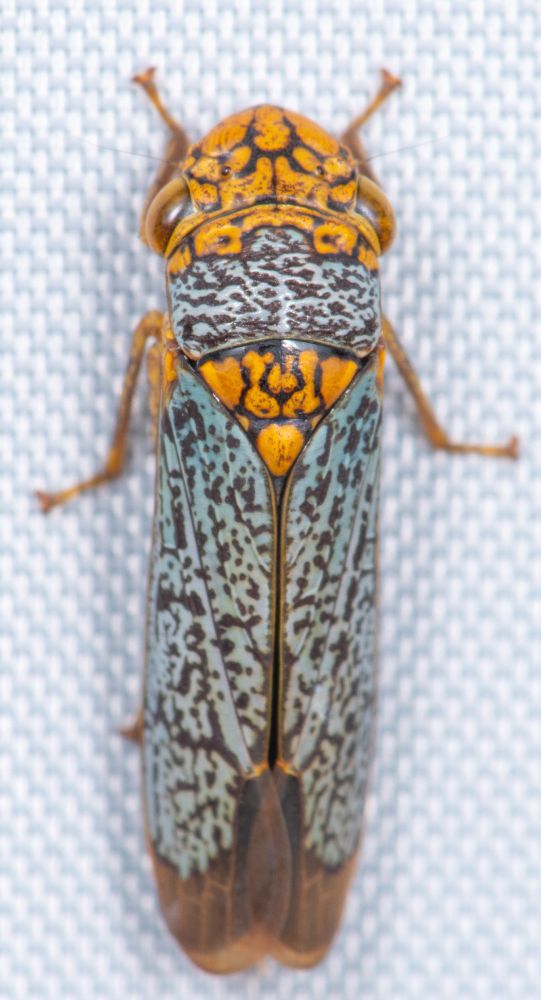
This image shows a close-up of an insect, specifically a sharpshooter (family Cicadellidae, subfamily Cicadellinae). The insect displays vivid coloration, characterized by intricate patterns of orange, gray, and black. Its wings have a complex pattern of grayish-blue with black markings, complemented by vibrant orange patterns on its pronotum and the base of its wings. The head and thorax also have bright yellowish-orange coloration with distinct dark markings. The body patterning is detailed and intricate, typical of sharpshooter leafhoppers. The insect is photographed against a textured, pale fabric background, highlighting its distinct coloration and morphological details.
Oncometopia from the last light trap of the season. #entomology #bugsky #hemiptera #Cicadellidae
09.03.2025 12:51 — 👍 38 🔁 6 💬 1 📌 0
Head, School of Biological Sciences, Monash University. Physiology | life history | ecology | evolution | higher education
I like sauce. I've got a stash of it. This is where I review it, mostly so I can go back and remember the good ones
She/her | Director of plant conservation (Lauritzen Gardens, Omaha, Neb., USA), focusing on Great Plains endemics and regionally imperiled or edge-of-range plants, including exceptional species like orchids.
The goal of the Canadian BioGenome Project is to produce high-quality reference genomes 🧬 for all Canadian species 🌎
Sequencing Canada's Biodiversity 🌿🦋🐍🧬🐢🦌🐸🌳🐿🐙🦈🦦
Learn more: https://linktr.ee/canadianbiogenome
The Earth BioGenome Project (EBP), a moonshot for biology, aims to sequence, catalog, and characterize the genomes of all of Earth's eukaryotic biodiversity over a period of ten years.
🌲Keep up with all EBP updates: https://linktr.ee/earthbiogenomeproject
Assistant prof neuroscientist studying TBI in headbutters 🐏🐂🐐🪶 at U of Alabama CVN lab.
Science correspondent for DTNS.
I'll happily ID the random bone you found in the woods! Accepting PhD students!
🌍 Biologist, 🪺 Studying strange animal nests, 📚 Author, 🧠 Doing science communication daily, 🏛️ Loves natural history, 🔥 Documenting the Anthropocene 🌐 www.aukeflorian.nl
📍 Leiden, The Netherlands
The open-access, peer-reviewed journal of the Orthopterists' Society. Publishes research on Orthoptera and allies. Published by Pensoft.
Website: jor.pensoft.net
🌿 Asst Prof @ UNC Charlotte. #NewPI. Molecular host-bacterial-fungal interactions. NCSSM/NCSU/Cornell alum. Y'all means all. Views are my own. she/her
Open Science Coordinator 👐🏾 | PhD in plant trait ecology @ Oxford Uni 🌱 | Editorial Board @plantperspectives.bsky.social 🌿 | Founder & Filmmaker 🎥 | 💚 Fabaceae, Crinoids, Outreach | AuDHD | She/her. Own views
saralilmiddleton.com
Bug, microbiome, and -omics enthusiast. UTSC Postdoc studying wood-eating wasps and moths. Aspiring academic twitter cool girl. 🐝🧬🪵🔬✨
A repository for photos of the critters I encounter.
Not an entomologist. I try my best to identify these little guys accurately, but ID suggestions/corrections are always welcome!
Entertaining & educational conversations about science, tech, + more. Hosted by Ira Flatow and Flora Lichtman. From WNYCStudios.
Postdoc in biology education (terminated NSF postdoc - STEMEdIPRF)
PhD in bioinformatics and genome evolution
#firstgen | she/her/hers | Roll Tide 🐘
New dad. Lawyer/Writer/America’s Grandma. Humor columnist for The Salt Lake Tribune. Creator of the Strangerville podcast. Humor essays here: https://itjustgetsstranger.com
Entomologist and artist. All views are my own.
Alberta, Canada.
They/them
🍉🌈🏳️⚧️
Natuur | Wandelen | Hobbyfotografie | Midden Limburg
Interesse in natuur en aardwetenschappen, paleontologie, astronomie, fotografie. ©Mynfoto op foto's.
🇨🇦 Scientific Illustrator | Speculative Evolution Artist | (He/Him)
Inspired by invertebrates, prehistoric fauna, and life on Earth. Creator of Project Perditus and Astrovitae Magazine.
Portfolio: www.domenicpennetta.com
🌿 Commissions are always open! 🌿










